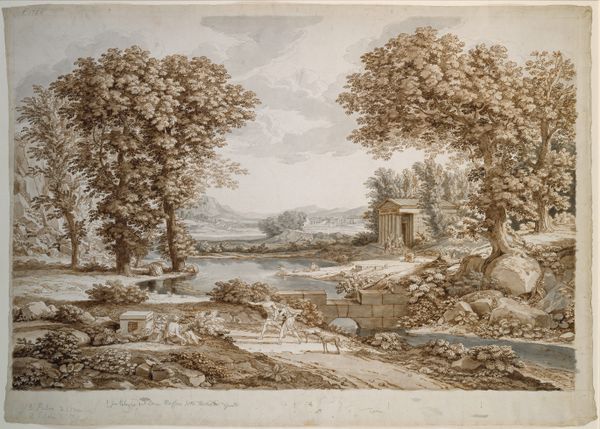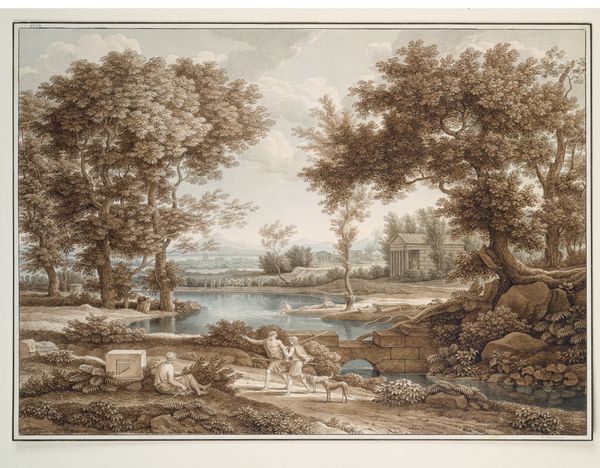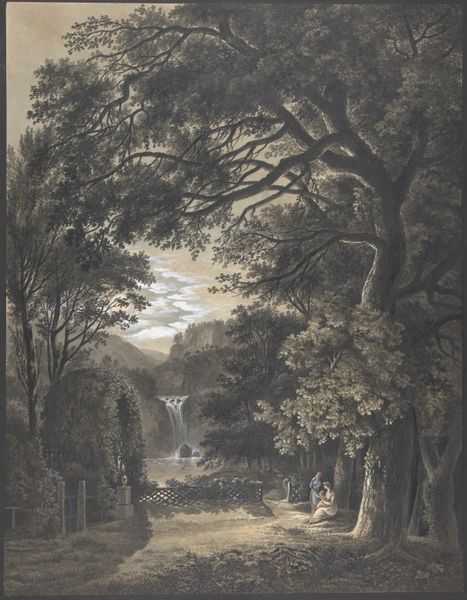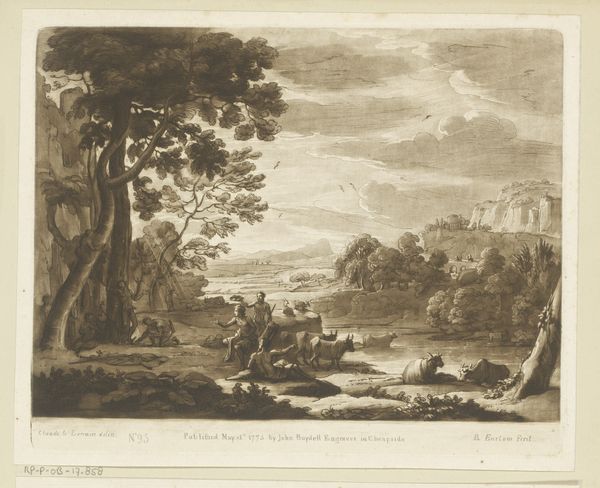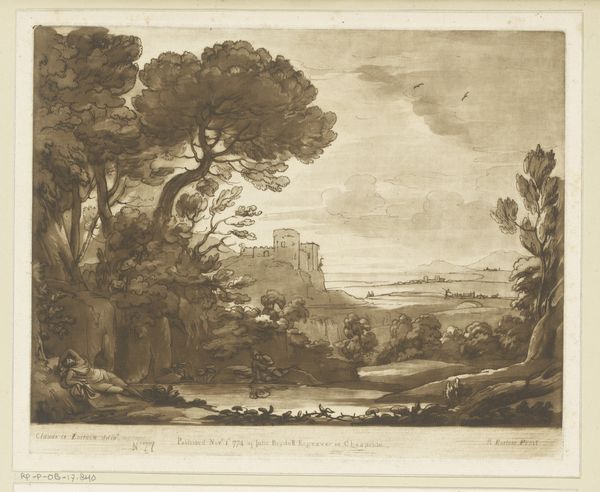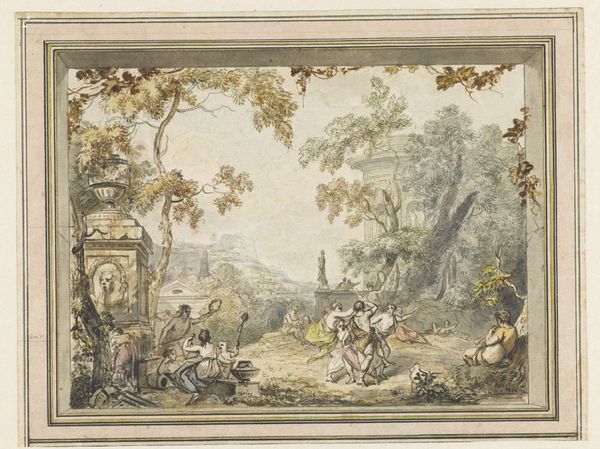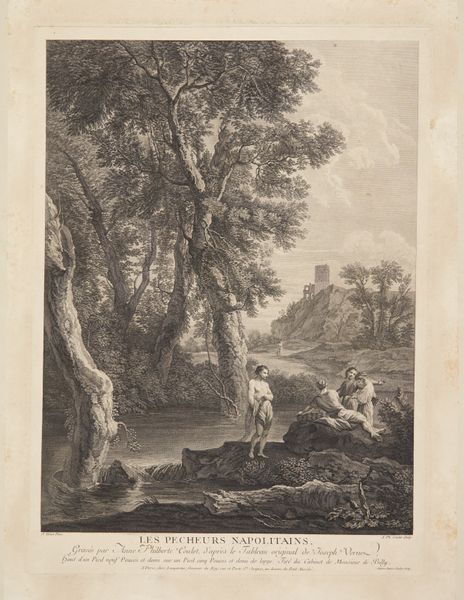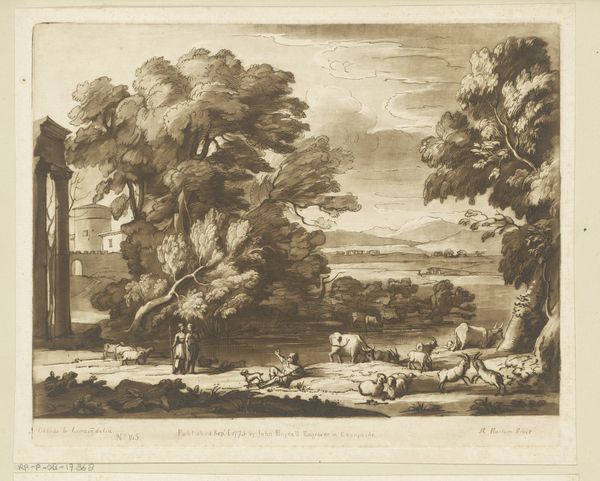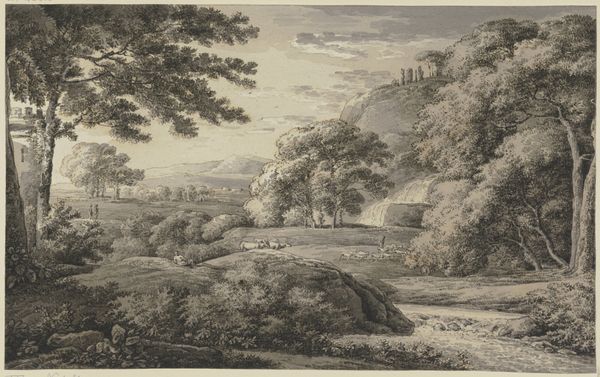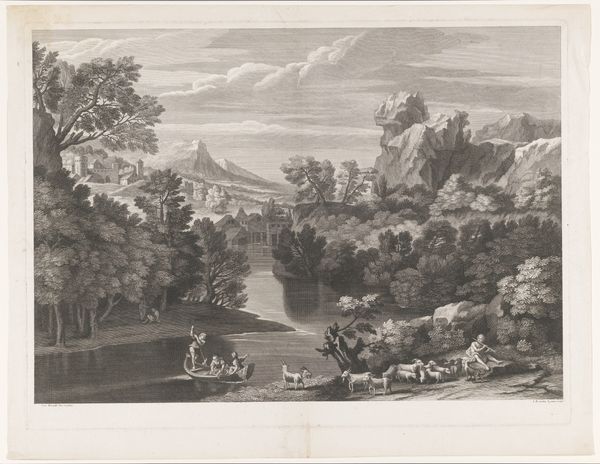
drawing, fresco, watercolor, ink, pencil, chalk, architecture
#
drawing
#
netherlandish
#
sculpture
#
landscape
#
fresco
#
watercolor
#
ink
#
pencil
#
chalk
#
15_18th-century
#
watercolor
#
architecture
#
rococo
Copyright: Public Domain
Curator: This is Isaac de Moucheron's "Arcadian Landscape with Palace Architecture," created around 1730 to 1740. The artwork, which employs ink, pencil, chalk, and watercolor, presents an imagined, idyllic scene characteristic of the Rococo period. Editor: Ah, instantly I feel this sense of dreamy tranquility. It’s like stumbling upon a forgotten corner of paradise. The trees, with their almost feathery lightness, frame the scene so perfectly. Curator: Indeed, Moucheron, coming from a family of prominent architects and painters, was deeply influenced by classical architecture and the desire to depict ideal landscapes. Such constructed landscapes reflect a nostalgic view of classical antiquity, often serving as backdrops for leisurely aristocratic life. The strategic use of architecture elevates it beyond simple scenery. Editor: Yes, the architecture! That hints at a past grandeur, a bit faded, perhaps even romanticized. And those tiny figures, they feel almost incidental, just enjoying the stage set for them. Curator: These Arcadian scenes gained popularity amidst a growing desire among the elite to reconnect with what they perceived as a simpler, more harmonious existence—though, of course, heavily filtered through the lens of privilege. Moucheron was quite successful creating interior frescos of idyllic scenes that were incorporated into homes. Editor: So, not exactly everyday life, more like...a beautifully staged daydream? Makes you wonder what those patrons really thought when looking at it? Did it truly transport them, or just remind them of what their life…wasn’t? Curator: It certainly created an atmosphere and cultivated a taste, feeding the market for these artificial yet pleasing settings. Editor: You know, looking at it now, there’s this almost cinematic quality. As if you could step right into it…become part of that lazy afternoon. Perhaps that’s why they loved it – escapism! Curator: Possibly. Ultimately, Moucheron captured and perpetuated an escapist vision that resonates, in different ways, even now. Editor: An escapist vision indeed. I think I'll escape now for a nice cup of coffee to contemplate it. Thanks!
Comments
No comments
Be the first to comment and join the conversation on the ultimate creative platform.
